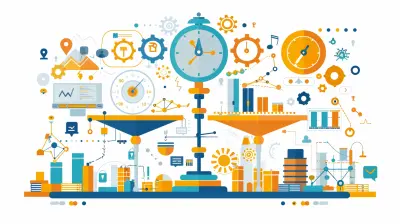Building a SaaS Support Team That Enhances Customer Experience
26 July 2025
Let’s face it—SaaS businesses live and die by their customer experience. You could have the flashiest software on the market, packed with features that solve every pain point under the sun. But if your support team leaves users hanging, you’re going to feel it fast. Cancellations. Negative reviews. And worst of all? Zero referrals.
That’s why building a top-tier support team isn’t just a nice-to-have anymore—it’s foundational to scaling your SaaS. In this article, we’ll dive deep into what it really takes to build a SaaS support team that doesn’t just answer tickets but actively enhances the customer experience.

Why Support Is the Heart of SaaS Success
Let’s keep it real: SaaS is a marathon, not a sprint. You’re not making a one-time sale—you’re nurturing long-term relationships. That makes support a linchpin. According to a Bain & Company study, a 5% increase in customer retention can boost profits by 25% to 95%. And guess what directly impacts retention?Yep. Customer support.
But here’s the thing: the old model of support—a reactive team buried in email queues—isn’t enough anymore. Customers expect speed, empathy, and above all, solutions. It’s time to level up.

What Makes SaaS Support Unique?
Support isn't one-size-fits-all. SaaS, in particular, comes with its own quirks.- Technical Complexity: Your users aren’t just asking where to click—they’re troubleshooting integrations, bugs, and workflows.
- Subscription Model: Every interaction can impact monthly recurring revenue (MRR).
- Self-Service Culture: Customers today like finding answers themselves.
- Frequent Updates: Your software is always evolving, which means your team needs to stay in the loop constantly.
So yeah, building the right support team? It’s an art and a science.
Step One: Define What “Great Support” Means For Your Brand
Before you go hiring a dozen agents, take a step back. What does world-class support mean in the context of your SaaS product? It might be:- Fast response times (under 5 minutes on live chat?)
- Deep product knowledge and technical expertise
- Personalized service
- Proactivity (reaching out before there's a problem)
You need to define this clearly first. Why? Because these expectations will shape every hiring, training, and process decision you make.
Pro Tip:
Create a support vision statement. Something like, “We empower our users to succeed by delivering expert, empathetic, and lightning-fast support.”
Step Two: Hire the Right People (Not Just Any People)
This part’s crucial. You’re building a team that’s often the first (and maybe last) human touchpoint your customers will have. You can't afford warm bodies—you need superstars.What to Look For:
- Empathy: Can they see things from the customer’s perspective?- Problem-solving skills: Do they enjoy puzzles? Can they think on their feet?
- Technical Aptitude: Especially important if your SaaS product involves APIs, integrations, or dev tools.
- Communication: Clear, friendly, and confident writing is non-negotiable.
Avoid the mistake of valuing only hard skills. In SaaS, soft skills often make the biggest impact.
Step Three: Structure Your Team to Scale
You wouldn’t build a skyscraper on a shaky foundation, right? Same goes for your support ops.Start With These Roles:
- Support Agents: The frontline—handling tickets, chats, and calls.- Technical Support Specialists: When problems get dev-level tricky.
- Knowledge Base Manager: Owns self-service content.
- Customer Support Manager: Oversees metrics, coaching, and team development.
As your SaaS grows, you can add tiers or specialized roles—like Customer Happiness Officers or Community Managers.
Don’t Forget Time Zones
If your SaaS is global, you’ll need coverage around the clock. Consider remote hires in different parts of the world to offer 24/7 support without burning anyone out.Step Four: Train Like You Mean It
Even the best hires will flop without good training. Your onboarding should cover:- Deep product knowledge (yes, have them use your product extensively)
- Ticketing system training (Zendesk, Intercom, Freshdesk—whatever you use)
- Brand voice and tone (are you quirky? Corporate? Friendly?)
- Common customer personas and pain points
- Escalation processes
And don’t make it a one-and-done! Continuous training keeps your team sharp as your product evolves.
Bonus Tip:
Host regular “What Went Right” and “What Went Wrong” sessions using real tickets. It’s a goldmine for learning and improving.Step Five: Choose the Right Tools (And Use Them Well)
Let’s talk tech stack. Your support platform can make or break productivity.Must-Have Tools:
- Helpdesk Software: Zendesk, Intercom, or Freshdesk.- Live Chat Tools: Drift, Tidio, or Olark.
- Knowledge Base: HelpCrunch, Document360, or Notion.
- CRM Integration: So reps get customer context fast.
- Analytics Tools: To track CSAT, response times, ticket volume, and more.
But here’s the kicker: Tools are only as good as how you use them. Automate what you can, but always keep the human touch.
Step Six: Build a Knowledge Base That Actually Helps
Want to reduce ticket volume AND delight your customers? Invest in a killer self-service portal.What to Include:
- How-to guides- FAQs
- Video tutorials
- Troubleshooting steps
But make it digestible. Think bite-sized answers, not walls of text. And optimize it for SEO—customers often Google their issue before reaching out.
Step Seven: Monitor the Right Metrics
You can’t improve what you don’t measure. Here's what to keep your eye on:- First Response Time (FRT): How quickly you reply.
- Resolution Time: How fast you solve issues.
- Customer Satisfaction Score (CSAT): A quick feedback survey post-interaction.
- Net Promoter Score (NPS): Measures overall customer loyalty.
- Ticket Volume Trends: Helps spot potential product issues.
Keep an eye on these weekly. If something dips, you’ll spot it before it spirals.
Step Eight: Foster a Culture of Continuous Improvement
Support isn’t a department—it’s a mindset. Your product team, sales, and marketing should all care about the customer experience.Encourage:
- Open feedback loops: Let reps share what customers are saying.- Regular product syncs: So support stays ahead of feature releases.
- Internal recognition: Celebrate agents who go above and beyond.
Also, keep refining your processes. As your SaaS evolves, so should your support playbook.
Step Nine: Make Support Proactive, Not Just Reactive
Want to really wow your customers? Get ahead of their problems.- Send onboarding emails and in-app walkthroughs.
- Monitor usage data to flag customers who seem stuck.
- Automate check-ins based on behavior (e.g., “We noticed you haven’t used feature X—want help?”)
Proactive support turns users into power users. Power users stick around longer and bring in referrals.
Step Ten: Align Support With Customer Success
This is where the magic happens. Support solves immediate problems. Customer Success drives long-term value. But together? They create a seamless journey.Share data. Swap insights. Create shared goals around retention and churn. When support plays a role in onboarding, upselling, and renewals, it becomes a revenue driver—not just a cost center.
Final Thoughts: Support Isn’t a Cost—It’s a Competitive Advantage
Here’s the truth: most SaaS companies have decent products. But few deliver memorable, human-first support. That’s your chance to stand out.The brands customers rave about—the ones they tweet about, refer to friends, and stick with for years? They’re not just offering good software. They’re offering great experiences.
And that starts with your support team.
So build it right. Train it well. Empower it with tools and insights. And watch what happens when customers feel truly supported.
all images in this post were generated using AI tools
Category:
Saas BusinessAuthor:

Remington McClain
Discussion
rate this article
1 comments
Fletcher Rogers
This article offers valuable insights into creating an effective SaaS support team. By prioritizing customer experience and investing in training, tools, and communication, businesses can significantly enhance satisfaction and loyalty. Implementing these strategies will not only improve service quality but also drive long-term growth and success for the SaaS company.
August 21, 2025 at 3:07 AM

Remington McClain
Thank you for your feedback! I'm glad you found the insights helpful for enhancing customer experience in SaaS support teams.


